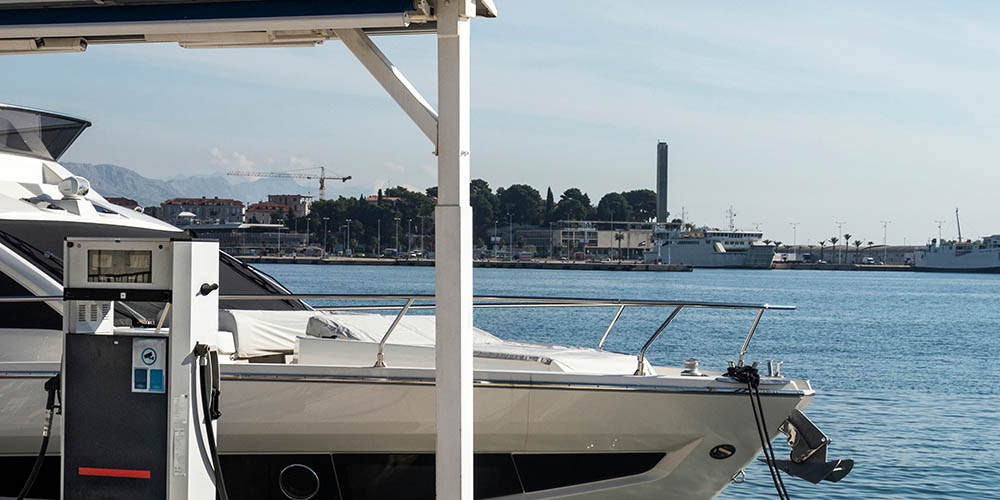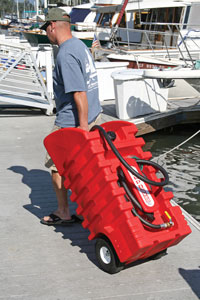By Don Casey; Last updated 6/25/2019


Higher fuel prices are taking a bigger bite out of everyone's boating budget. Grousing won't help, but here are some take-control measures that will lower your fuel consumption and measurably reduce the cost of every single outing.
- Keep the bottom clean. A fouled bottom has about the same effect on fuel consumption as towing a room-sized carpet. Moored and slipped boats in salt water require the protection of fresh antifouling paint. Be careful about leaving your normally dry-stored boat in the water for more than a few days as drag producing fouling occurs in an astonishingly short time on an unprotected hull. Keep your running gear free of barnacles.
- Tune your engine. Gasoline engines deliver their best economy and their best performance only when they are in good tune. Diesel engines are less tune-sensitive, but having the injectors serviced and cleaning or replacing the air filter is likely to boost fuel economy. Changing engine oil every 100 hours increases fuel economy as well as engine life.
- Drive smart. Handle throttles smoothly, applying only as much power as circumstances require. Don't be too tentative-getting up on plane quickly actually saves fuel-but pushing the throttle control to the stop almost certainly wastes fuel. Learn to cruise at your boat's most economical speed.
- Don't push water. Proper trim is essential to good fuel economy. Plowing, kiting and porpoising all result in higher fuel consumption. If your boat does not trim properly, invest in trim tabs. Outboard-powered boats can benefit from bolt-on hydrofoils.
- Check your prop. Unless the blades are perfectly true, the prop will fail to provide maximum thrust. Blades with nicks and dings create power-robbing turbulence. Have the prop reconditioned. Make a test run with your boat loaded the way you use it to be sure the fitted prop doesn't allow your engine to exceed the recommended wide open throttle (WOT) rpm. From the perspective of fuel economy, a bit too much pitch is usually preferable to a bit too little. If you need to change props, consider a cupped or a four blade wheel for more efficient mid-range performance.
- Lighten the boat. Hauling around stuff that doesn't need to be aboard burns extra fuel, so do some earnest housecleaning. Take aboard only enough fuel to provide a comfortable margin of safety for your planned outing, not as much fuel as the boat can carry. This not only lightens the boat and improves fuel economy, but your engine benefits from a steady diet of fresh fuel. You will also get better mileage with lighter fishing buddies, but maybe that is over the top.
- Install a fuel flow sensor. A flow sensor networks with your NMEA 2000 multifunction display or instruments, and tells you in real time exactly how much fuel your engine is consuming. This information allows you to accurately adjust both throttles and trim for maximum economy even as wind and sea conditions change. A flow sensor also keeps up with total fuel consumed and it has the added value of providing early warning of developing engine and running gear problems or fouling.
- Repower. When it comes time to repower, oil supply realities make it prudent to pay attention to the fuel efficiency of the motors you are considering. Do not underpower; a too-small engine works harder and burns more fuel. 4-stroke outboards are generally more economical, but direct-injection combined with lighter weight keeps the current generation of 2-stroke engines competitive.
- Buy a sailboat. The wind is free.